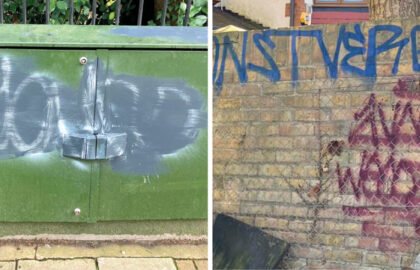After reading Paul Canal’s article about local car use in last month’s issue, Kris Sangani felt compelled to write a reply. Here, the Aldersbrook resident says motorists, cyclists and pedestrians must learn to share
After reading the article by Paul Canal in the July 2023 issue of the Wanstead Village Directory, I felt I needed to write a reply. In his article, Paul claims ‘idealists’ have declared a war on cars. While some may wish to blame an alliance of local government, cyclists and climate ‘do-gooders’, the real reason it takes longer than ever to get from A to B is because there are more cars than ever before.
Redbridge Council, TfL and Westminster – through a newly anointed agency Active Travel England – are trying to deal with the fact we’re not able to build more roads or allocate more parking spaces to accommodate a growing population in Redbridge and elsewhere in London. This isn’t an attack on civil liberties; framing it as a war on motorists has real-world consequences that could be fatal for more vulnerable road users, such as cyclists and pedestrians.
No roads are being narrowed; some are being shared with other modes of transport. On Aldersbrook Road, for example, there were two lanes – one for each direction – 40 years ago, and today, there are still two lanes. But now, the council have managed to squeeze a cycle lane on either side. Residents are happier that motorists are not racing down the road between 40 and 50 miles per hour as they did when I was a child. The speed limit is now 20. It’s easier to cross over to Wanstead Flats on one side or Wanstead Park on the other.
Paul’s article also claimed the parklet on Wanstead High Street costs the local economy £120,000 a year. Where on earth did that figure come from? A parklet is a pavement extension designed to provide more space and amenities for pedestrians who make up the vast bulk of visitors to our High Street and who spend the most in our local shops. The simple fact is motorists, cyclists and pedestrians must share the road. That often means encouraging motorists to use other forms of transport if they can do so. A cyclist takes up less space on the road. Therefore, each car journey substituted means more room for disabled motorists who have fewer opportunities to replace their journeys. It’s up to all motorists to ration their car journeys.
My parents were blue badge holders in Redbridge. In addition to free and priority parking on streets with meters, there were disabled parking bays, and you could often park on single and double yellow lines for up to three hours. The criteria for blue badge holders has recently widened to include people whose disability may be hidden. Additionally, blue badge holders get a free allocation of visitor permits if they live in a controlled parking zone – there should be no fear of isolation and loneliness.
Given all the challenges we face, let’s have a sensible debate on road infrastructure.
To read Paul Canal’s article published last month, visit wnstd.com/canalcar




